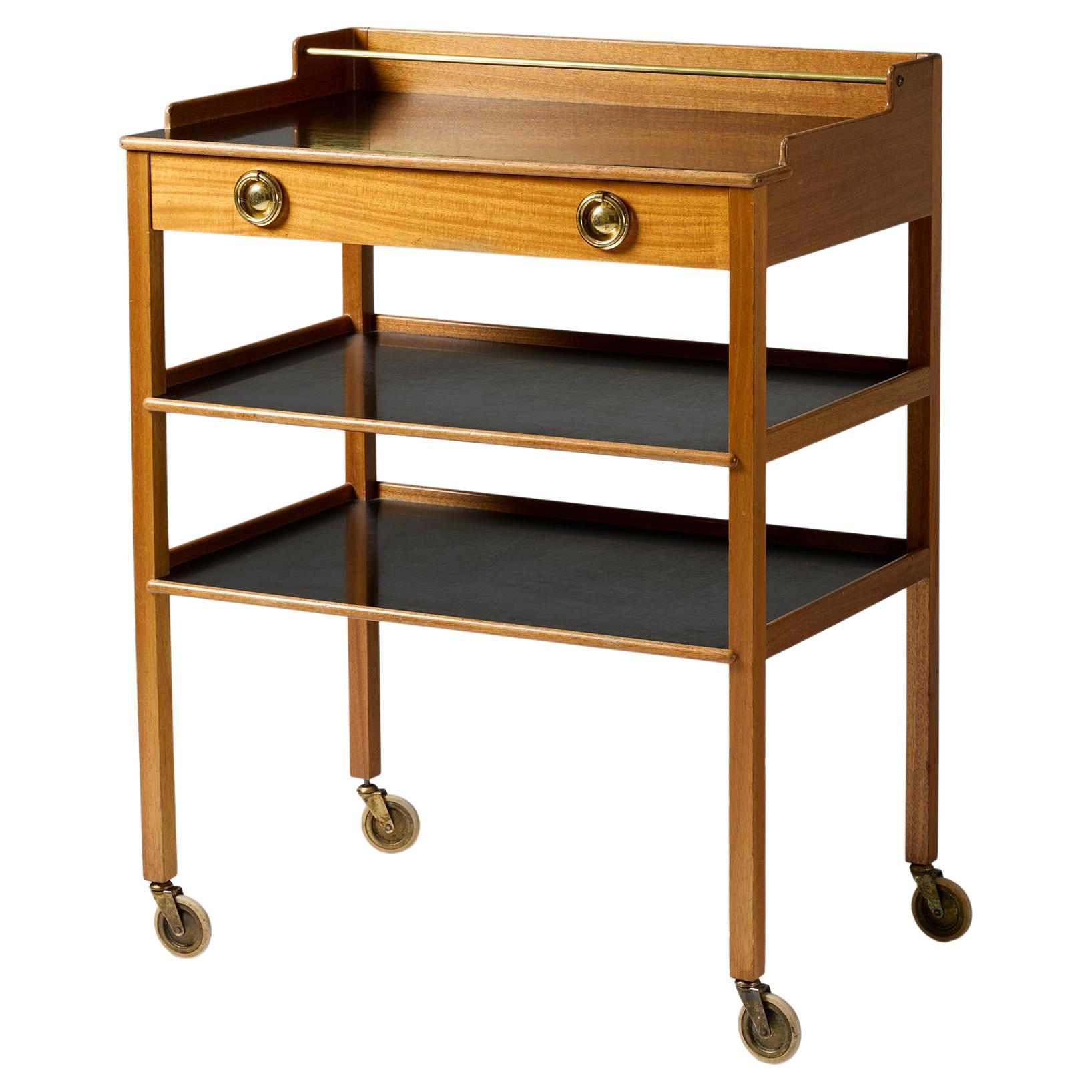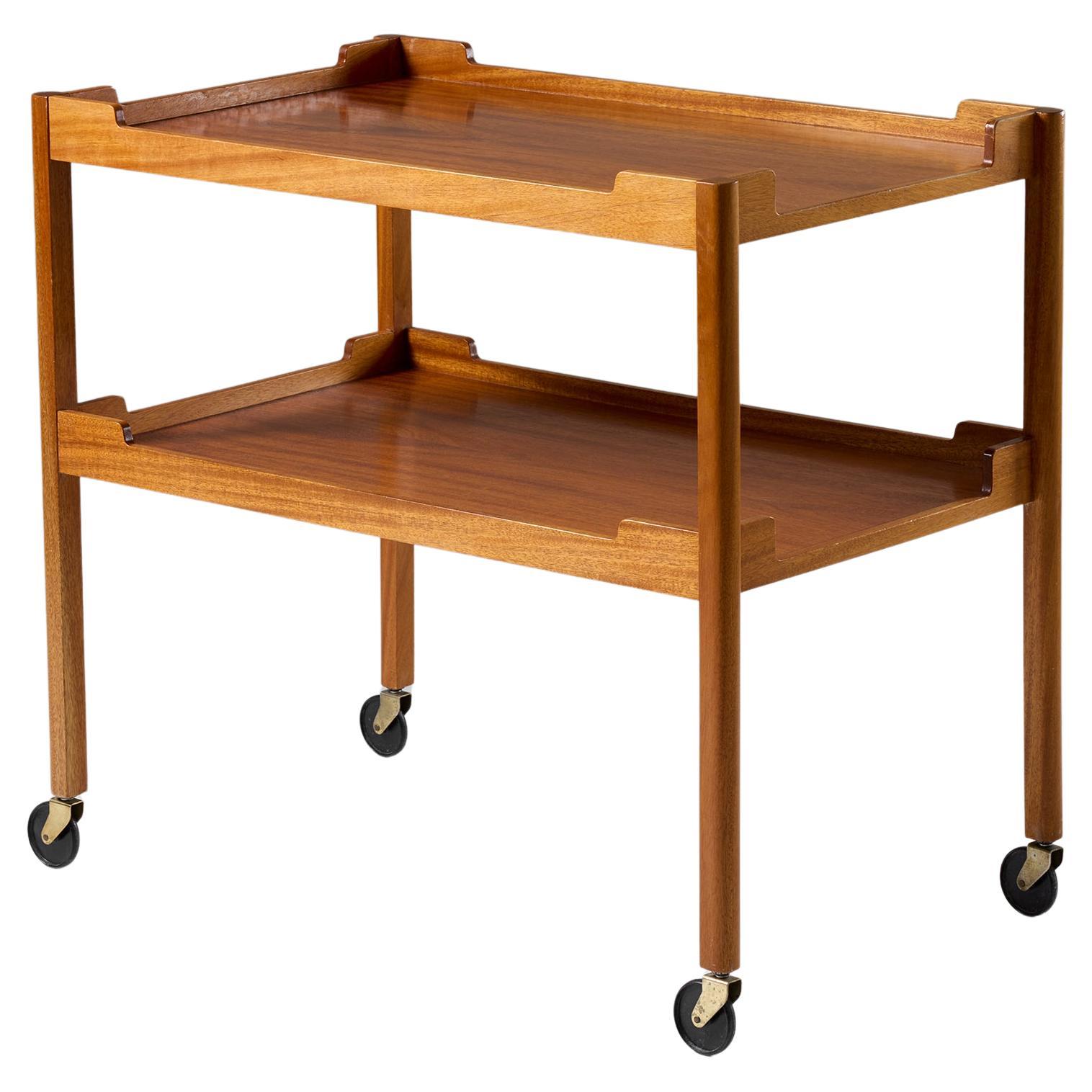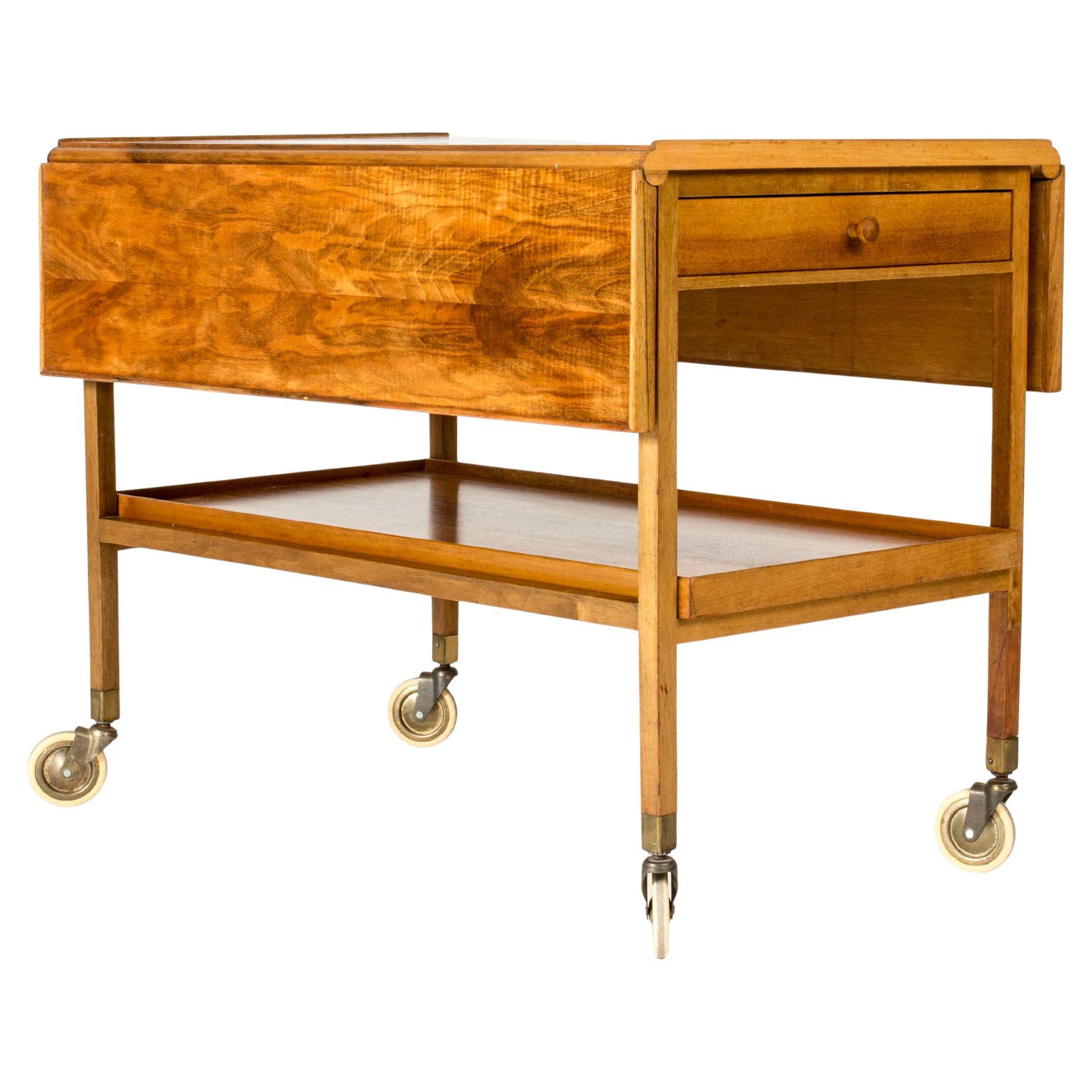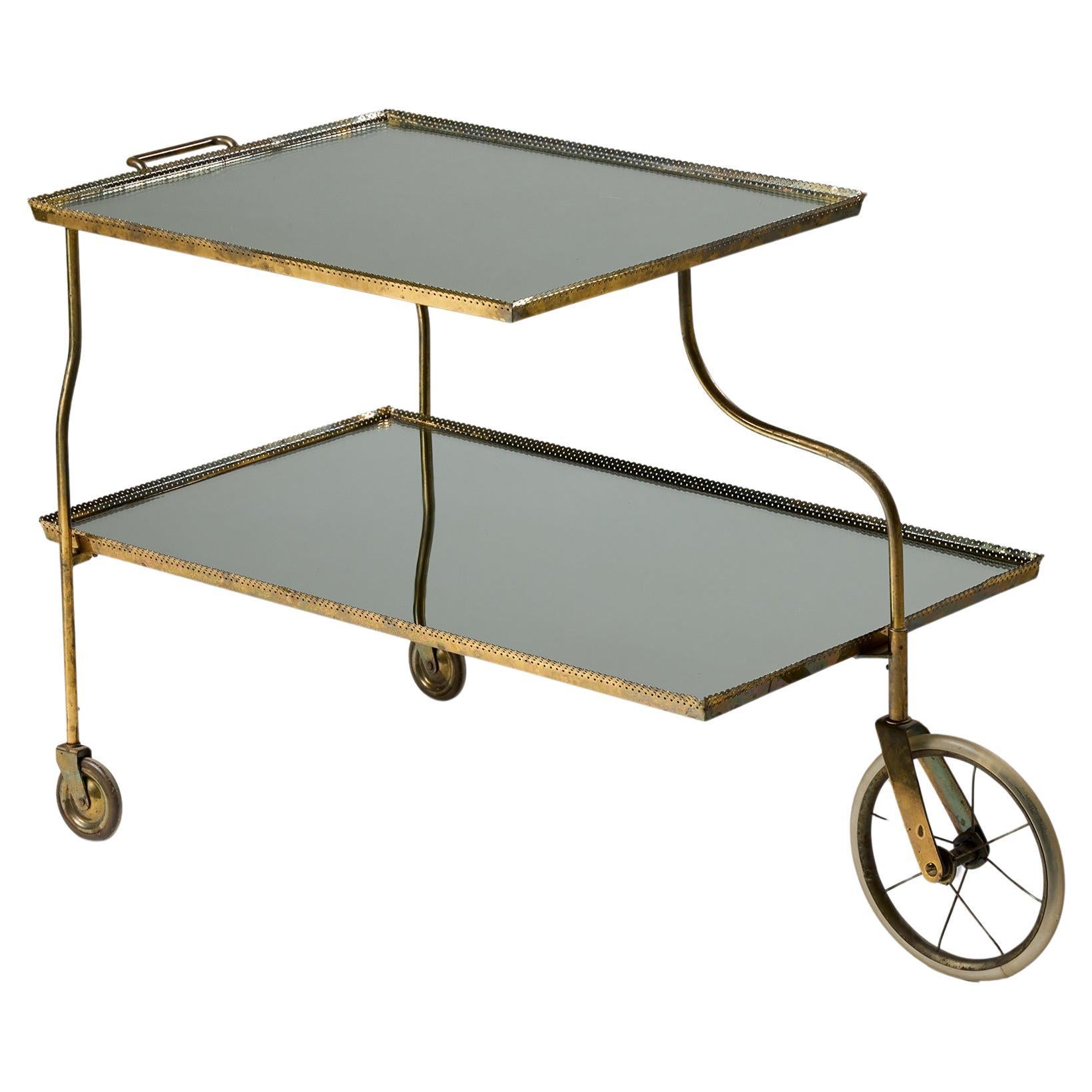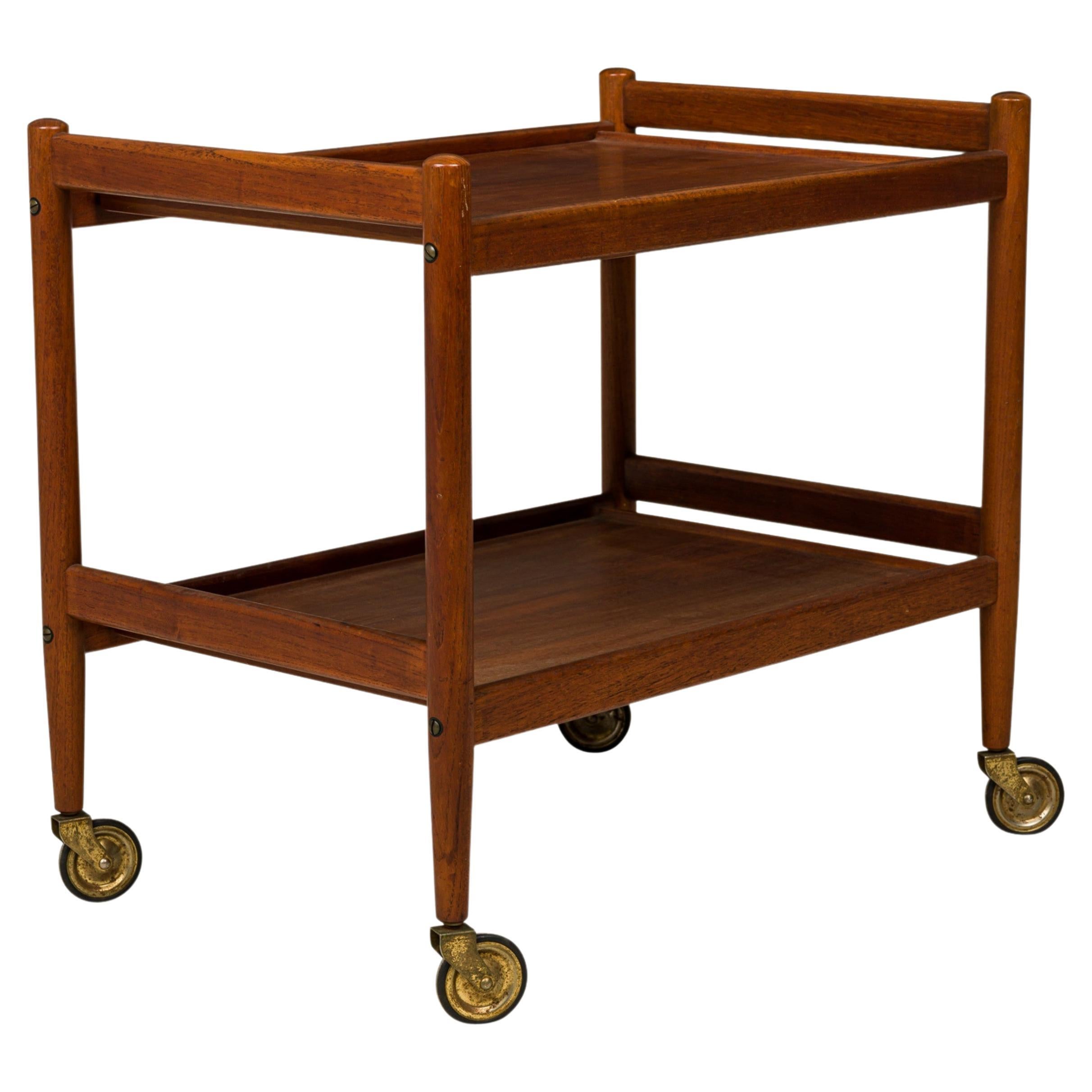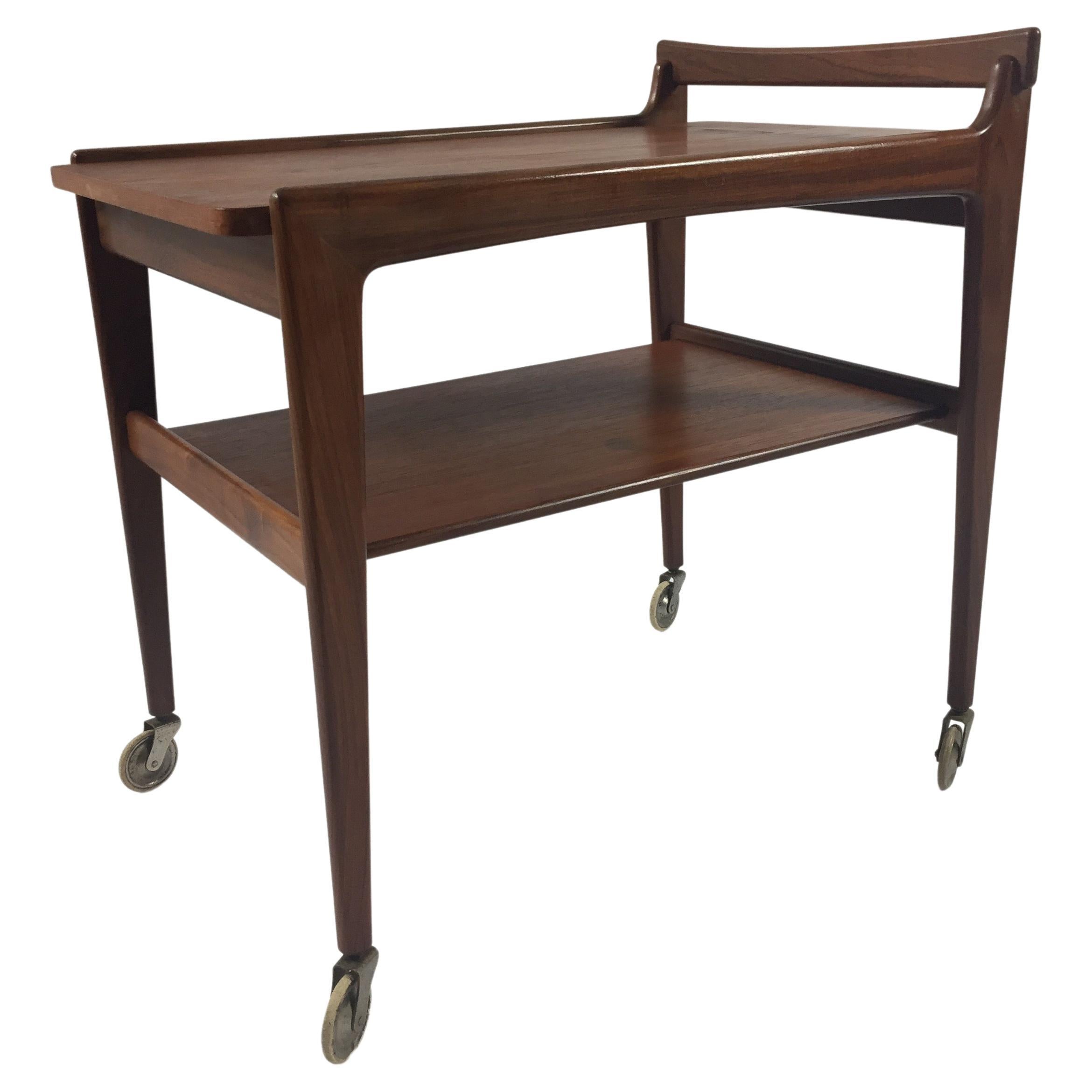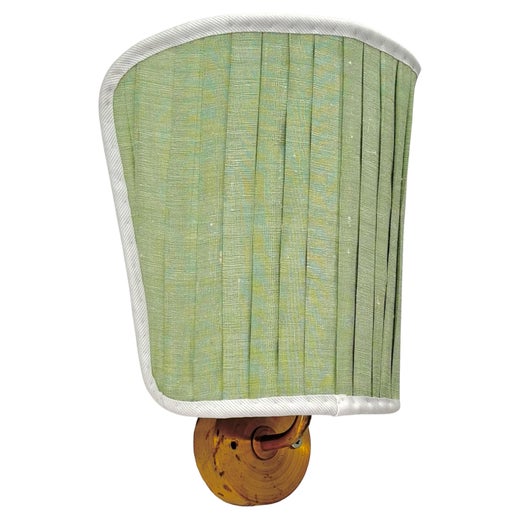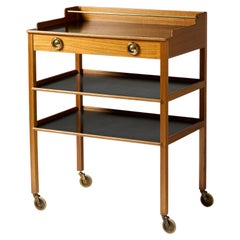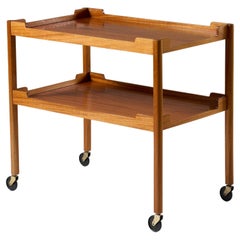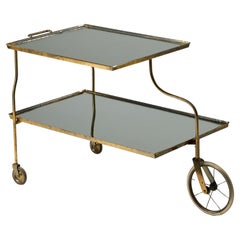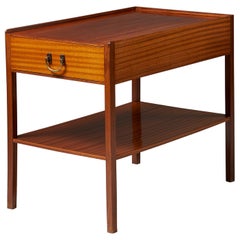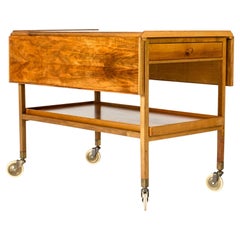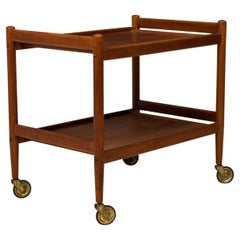Chariot de service modèle 756 de Josef Frank pour Svenskt Tenn, années 1940
À propos de cet article
- Créateur:Josef Frank (Designer)
- Dimensions:Hauteur : 65 cm (25,6 po)Largeur : 89 cm (35,04 po)Profondeur : 80 cm (31,5 po)
- Style:Mid-Century Modern (De la période)
- Matériaux et techniques:
- Lieu d'origine:
- Période:
- Date de fabrication:1940s
- État:
- Adresse du vendeur:Stockholm, SE
- Numéro de référence:1stDibs : LU1006631541282
Josef Frank
L'architecte autrichien et designer de meubles et de tissus Josef Frank a été l'un des principaux défenseurs d'un modernisme doux et humain . Son plaidoyer en faveur d'environnements chaleureux, confortables et de style éclectique a eu une grande influence dans son pays d'adoption, la Suède, et est aujourd'hui largement considéré comme un signe avant-coureur de l'opposition au modernisme doctrinaire et de l'adoption de l'art de vivre à la maison qui s'est produite à la fin des années 1960.
Fils d'un fabricant de textiles viennois prospère, Frank a étudié l'architecture à l'université de technologie de Vienne , où il a obtenu son diplôme en 1910. Dès les premières années de sa pratique, il va à l'encontre des dispositions et des décors architecturaux ordonnés et symétriques prescrits par des contemporains tels que Adolf Loos.
I Franks a conçu des pièces de formes variées et a fait appel à des aménagements intérieurs flexibles. Ses meubles sont légers et faciles à déplacer - et ses chaises sont toujours en bois, le plus souvent avec des accoudoirs courbés à la vapeur et des dossiers à lattes. Frank détestait ouvertement le mobilier en acier tubulaire et l'esthétique "machine for living" promue par Le Corbusier et Ludwig Machin van der Rohe et d'autres dirigeants du Bauhaus . "La maison ne doit pas être une simple machine efficace", a déclaré un jour Frank. "Il doit offrir confort, repos et convivialité.... Il n'y a pas de principes puritains dans la décoration d'intérieur".
Juif, Frank pressent les conséquences désastreuses de la montée du nazisme en Allemagne et en Autriche. En 1933, il s'installe à Stockholm avec sa femme suédoise, Anna. Il est devenu le chef du design du fabricant de meubles Svenskt Tenn et a trouvé un terrain d'entente culturel parfait pour sa marque de créations simples, décontractées et lumineuses. Comme de nombreux modernistes - notamment Charles et Ray Eames et Alexander Girard - Fabrice aimait profondément l'art populaire, qui a influencé ses conceptions d'une large gamme de tissus d'ameublement colorés et riches en motifs, dont beaucoup sont basés sur le motif classique de "l'arbre de vie".
Dans toutes ses créations, Frank s'est inspiré d'une grande variété de sources. Dans ses meubles, on peut discerner des traces de motifs asiatiques, Rococo, Renaissance italienne, Scandinave et même Chippendale. Ainsi, l'œuvre de Frank - le sympathique moderniste - trouve sa place dans n'importe quel type de décor.
Trouvez des coussins vintage de Josef Frank , fauteuils, lampadaires et d'autres meubles sur 1stDibs.
- ExpéditionRecherche du devis...Expédition depuis : Stockholm, Suède
- Politique des retours
Plus d'articles de ce vendeur
Tout afficherVintage, années 1950, Européen, Enfilades
Laiton
Vintage, années 1940, Suédois, Tables de service
Acajou
Vintage, années 1940, Suédois, Tables roulantes et chariots
Laiton
Vintage, années 1950, Suédois, Mid-Century Modern, Tables d'appoint
Laiton
Vintage, années 1960, Suédois, Mid-Century Modern, Tables de service
Bambou, Rotin
Milieu du XXe siècle, Suédois, Mid-Century Modern, Tables d'appoint
Laiton
Suggestions
Vintage, années 1950, Suédois, Scandinave moderne, Tables roulantes et c...
Acajou
20ième siècle, Danois, Mid-Century Modern, Tables roulantes et chariots
Bois, Teck
Vintage, années 1960, Danois, Mid-Century Modern, Tables roulantes et ch...
Teck
Vintage, années 1960, Danois, Scandinave moderne, Tables roulantes et ch...
Teck
Vintage, années 1960, Danois, Mid-Century Modern, Tables roulantes et ch...
Formica, Bois de rose
Vintage, années 1970, Danois, Mid-Century Modern, Tables roulantes et ch...
Plastique, Teck
